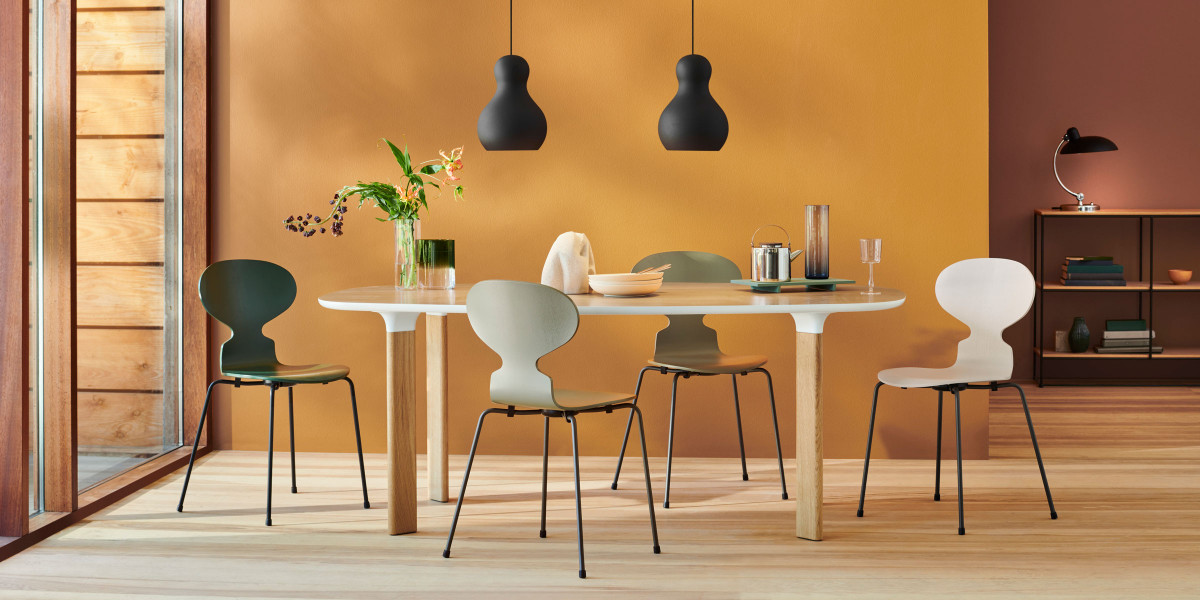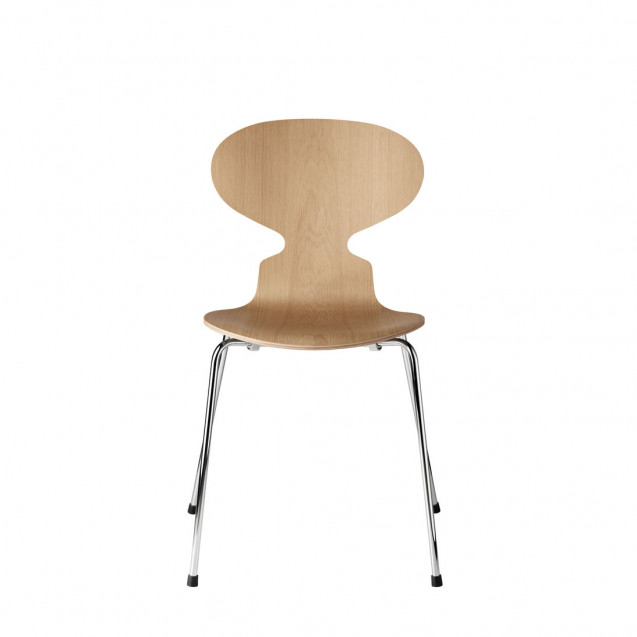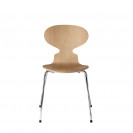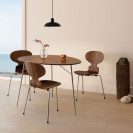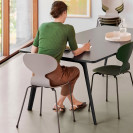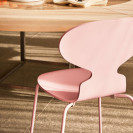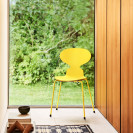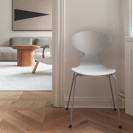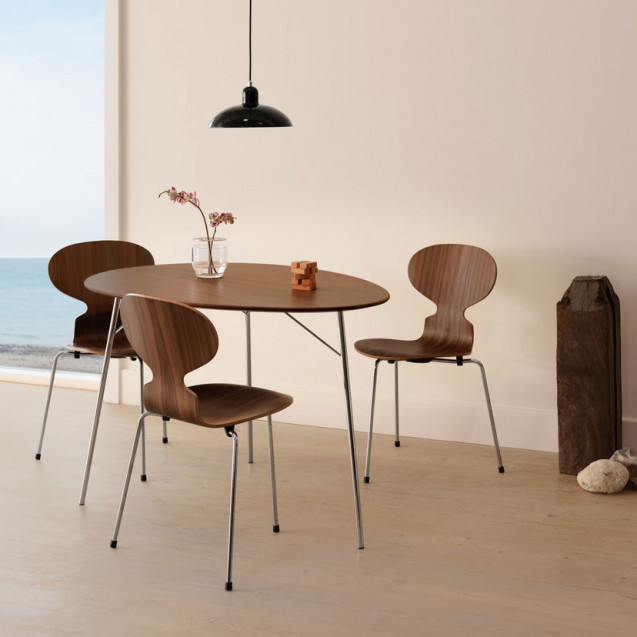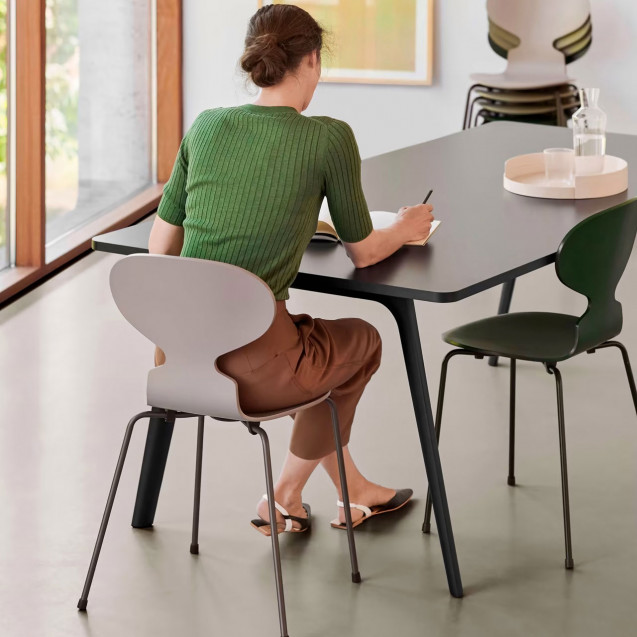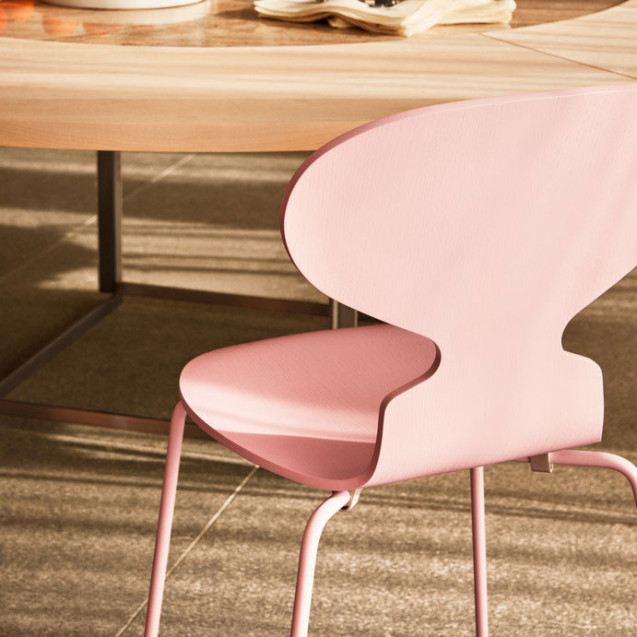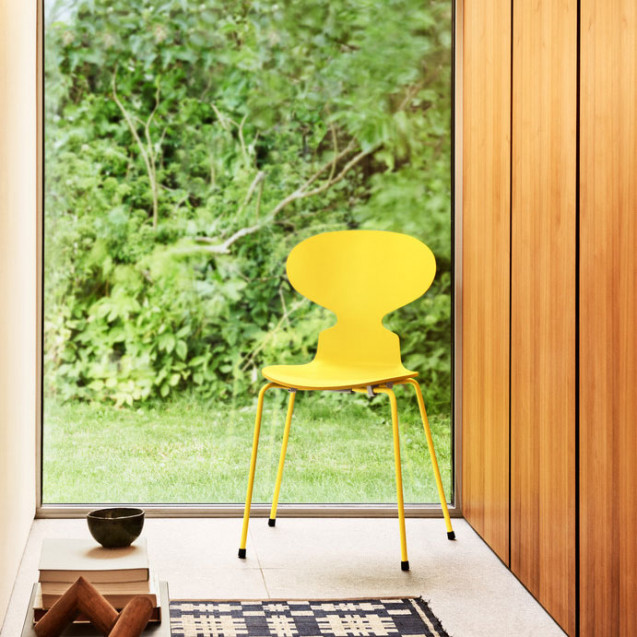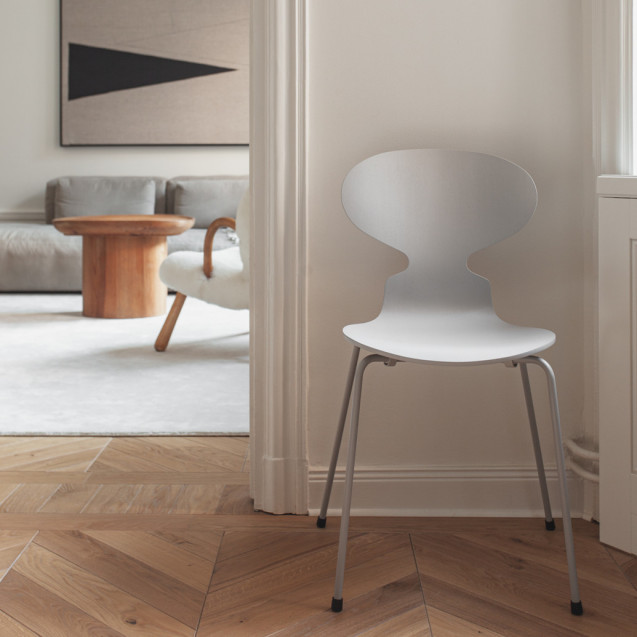Ant™
The Ant™ chair’s visual expression is delicate and artful, much like the curves of a musical instrument. Designed by Arne Jacobsen in 1952, the chair is made from nine layers of pressure moulded veneer. Its elegant shape disguises its remarkable strength and comfort.
| About Designer | |
|---|---|
Arne Jacobsen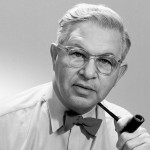 |
Arne Jacobsen (Danish, 1902–1971) was an architect and designer, well known for his contributions to the Functionalist movement. Born in Copenhagen, Jacobsen attended the School of Architecture at the Royal Danish Academy of Fine Arts. While in school, Jacobsen submitted a chair design to the Exposition Internationale des Arts Décoratifs et Industriels Modernes, and was awarded a silver medal. Among his early influences were Le Corbusier, Ludwig Mies van der Rohe, and Walter Gropius. After briefly working in the architecture firm of Poul Holsøe, Jacobsen, in collaboration with fellow architect Flemming Lassen, won the House of the Future award from the Danish Architect’s Association. This success enabled him to open his own practice in 1929. Over the next several years, Jacobsen created numerous structures in the International Modern Style, and subscribed to the idea of "total design," creating everything from the furniture and fittings to the uniforms of the building’s employees. During World War II, Jacobsen was forced to flee to Sweden, where he spent a majority of his time designing wallpaper and textiles. In 1945, he returned to Denmark, and resumed his architectural pursuits, which included The Number Seven Chair and The Ant, launching his reputation as a world-renowned furniture designer. In 1956, he received his most prestigious commission, the SAS Royal Hotel in Copenhagen, for which he created everything down to the smallest detail, including ashtrays, lighting, and cutlery. In addition, he produced the Egg and Swan chairs, acclaimed for their organic, sculptural qualities. Also in 1956, he accepted a position as a professor of architecture at the Skolen for Brugskunst. In the 1960s, Jacobsen increasingly turned to forms such as the circle, cylinder, triangle, and cube, always with an eye toward proportion. Today, in addition to his many architectural works, which can be seen throughout Copenhagen, his pieces can be found in numerous international collections, including The Museum of Modern Art in New York, the Design Museum in London, and the San Francisco Museum of Modern Art. |
